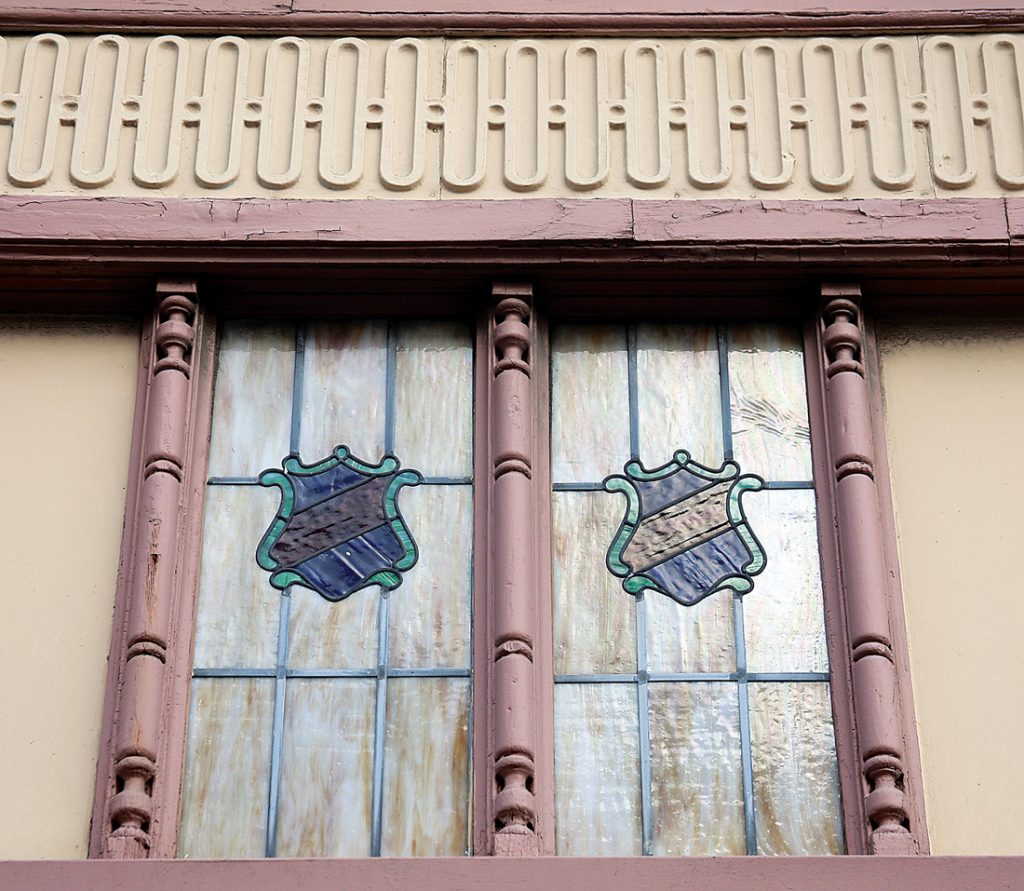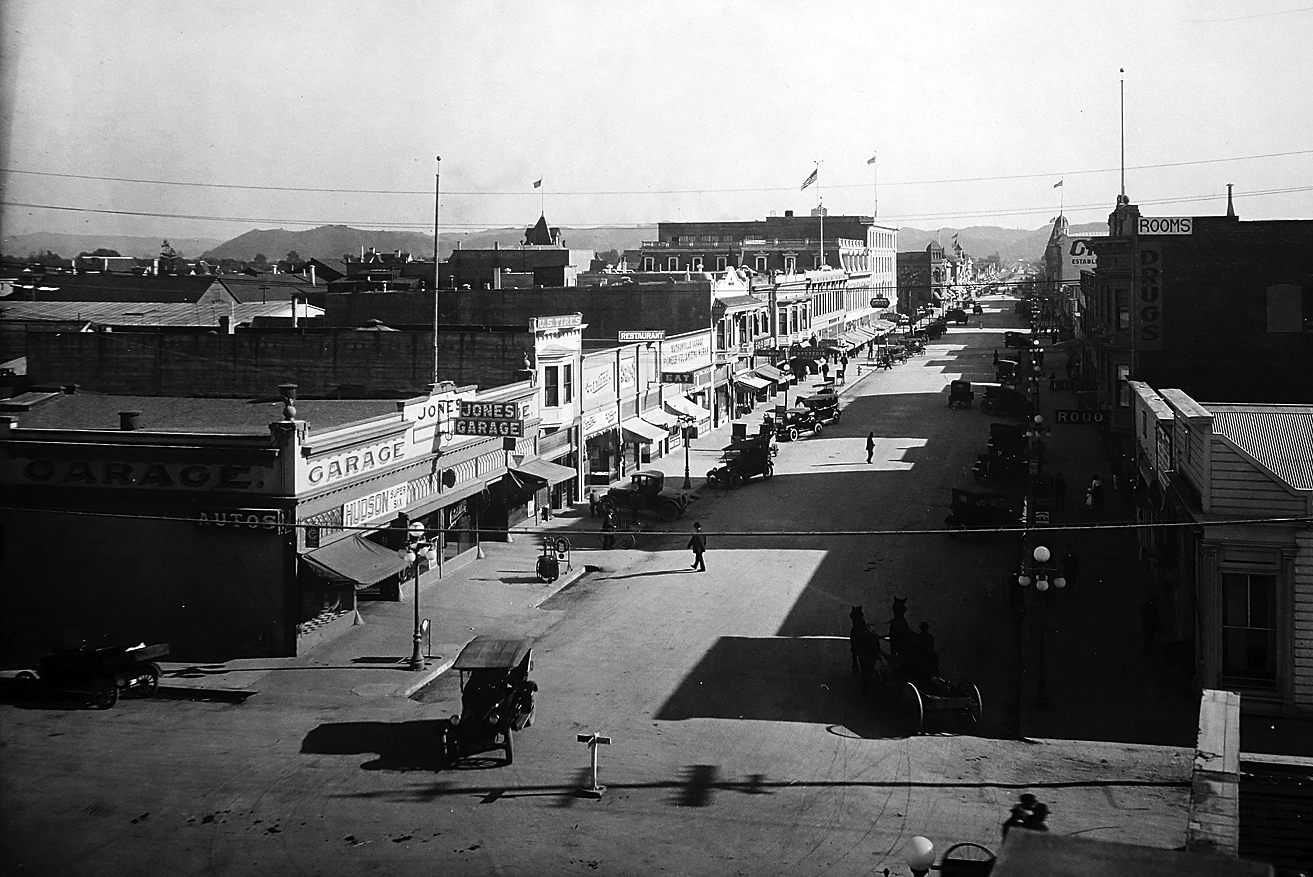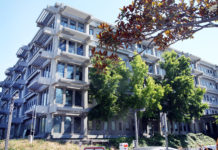Editor’s note: This is the first entry in a monthly series about the history scattered throughout downtown Watsonville and the city at large.
For the past several months I’ve been getting around town, mostly by bus and on foot. Besides being a giant change in lifestyle, the shift has critically sharpened my grasp of Watsonville, especially the downtown area where our new office is located.
For years I’ve driven past so many of these buildings along Main Street, for example without taking in more than a casual glimpse or a fleeting image of some historical tidbit of the buildings, or a fountain, colorful ceramic tiles, a canon in the plaza or a quartet of gargoyles peering down at passing traffic.
It’s embarrassing to only now notice the high relief designs of Ben Franklin, creator of the first newspaper (Poor Richard’s Almanac) and Johannes Gutenberg, inventor of the printing press, emblazoned on the façade of the old Pajaronian, 18 East Lake Ave. Also present are scrolls of paper, quill pens and an open book.
From a car, I’ve never seen these, ever. Just down East Lake at Main Street, the Goodwill store (470 Main St.) is in an interesting building that features a border of knee-high, black and green marble along the sidewalk. Incidentally, I noticed that exact marble also lines the base of the exterior walls of the Resetar Residential Hotel across the street and the lobby of the nearby Lettunich Building. Bordering the upper shelf of the Goodwill store are several installations of colorful leaded glass designs in the form of some kind of shield. The filigree adds another level of intriguing design.

What’s been circulating through my skull, generated by these walks, is this: Who built these businesses; who came up with the marble motif; why were the leaded glass panels brought in; what businesses have come and gone?
Numerous visits to the Pajaro Valley Historical Association on nearby East Beach Street have answered a lot of these questions, thanks to folks like Lou Arbanas, Susan Jacobs and Bill Beecher. Jacobs said the current Goodwill was once a Sprouse-Reitz, which was part of a now-defunct chain of five-and-dime stores that were based in Portland, Oregon. The company was founded in 1909 in Tacoma, Washington. In its prime, there were around 470 stores in the western United States.
Thanks to early day photos in the PVHA’s archive, I’ve learned that the popular corner location where Goodwill now stands once housed Jones Garage, clearly shown in the circa 1920 photo included here. A huge sign out front reads HUDSON Super Six. With Main Street still dirt, a horse-drawn cart swings a right turn from West Lake onto Main Street while a motorcar is about to turn left next to a tiny street sign planted in the center of the intersection. The massive Lettunich Building is seen in the distance on the left, and beyond it is the dark-colored Pajaro Valley Bank on the corner of Peck Street at the plaza. Note on the lower right that the photo was taken before the current day Resetar Hotel came along, which would eventually be built where the single-story wood structure, called Hollister’s Groceries stands. That little structure was eventually moved to Rodriguez Street and then torn down in the early 1970s.
Then, in the PVHA’s 1939 photo (included here) of the same corner, Sprouse Reitz is now Wings furniture store. Next door is a Snookers (billiards) place, that some folks, according to Arbanas, wouldn’t allow their kids near. Also in the photo, Main Street is paved, traffic is abundant, banners and flags fly above the street, signage for candy, coffee, a bakery, cigars, hotels and garages abound and the Fox Theater dominates the far end of the photo.

As I walk through town now I try to imagine the sounds, smells and sights of the same places in another time. Scores of people I’ve met here have painted fascinating pictures of Wildcatz homecoming parades—people like Joanne Buob-Martin, Watsonville High School class of 1962, who was a pom-pom girl aboard one of the numerous floats; people like Janey Leonarich, who, as a freshman, walked into Towntry Fashions on Main Street and put a dress on layaway and later started a rewarding job there.
“Bernice and Mo Reeves owned the business,” she said. “They carried the top-end line of clothing, the stuff you’d find at I. Magnin. They even had a furrier because so many clothes in those days had fur cuffs and collars.”
The door slam of a Model T, the creek of passing horse buggy, the clunk of a beer mug on the bar counter and the whirring of the backroom printing press of the Pajaronian: These are a few of the things I want to touch on in this ongoing series. Look for the next chapter on Feb.7.
Contact reporter/photographer Tarmo Hannula at th******@********an.com.









